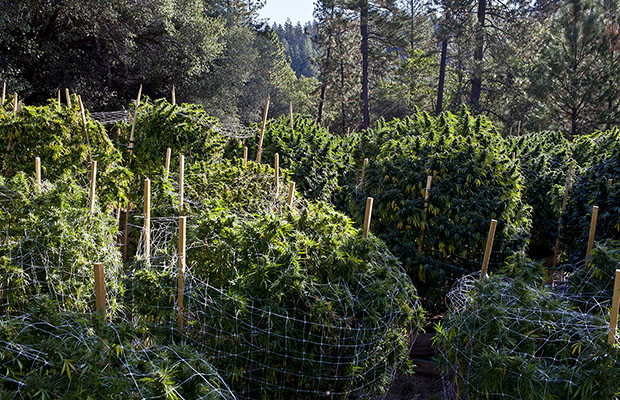
Politics
CA’s Regulations Spark Debate Over Farm Acreage Caps
Many cannabis industry insiders feared legalization would push small farmers out of their livelihoods. California’s new regulations are only increasing those worries.
Two weeks ago, California released temporary cannabis regulations for the state’s recreational cannabis market. Many small farmers expected the state to institute a one-acre farm limit in the regulations in order to prevent the emergence of large-scale cannabis corporate farmers, but the new rules included no such one-acre cap.
Experts and small farmers, in the weeks since California released its temporary rules, have been weighing in on the state’s forthcoming implementation phase — and expressing fear of what’s to come for small cannabis producers.
Hezekiah Allen, the executive director of the California Growers Association, told his supporters in an email after the regulations were released that the lack of the one-acre farm cap goes against the promises of California’s Proposition 64, the ballot initiative that legalized adult use cannabis in the state.
“Essentially this means that mega grows, the ones that Prop. 64 promised to delay for five years and that the Environmental Impact Report did not analyze, may be possible in early 2018,” Allen wrote. “I asked for your input on this policy decision; 92 percent of you support a total acreage cap and 82 percent of you feel strongly the cap should be one acre. This survey helped to inform our Executive Committee as they voted unanimously earlier today to make implementation and enforcement of the acreage cap our highest strategic priority.”
Allen’s support poll was conducted among CGA’s membership, which consists of some of the more reputable growers in the state. It’s easy to presume that support for the one acre cap would be even higher among the black market growers, hiding up in the hills.
For a long time, one of the biggest fears for cannabis farmers with decades of history in California was corporate giants being able to enter the game. As these farmers continued to watch their own profits dwindle in the last two decades following the passage of Prop. 215 and with the creation of the grey market, it wasn’t hard to see the storm clouds forming in the distance that could pose trouble.
Facing this growing reality, farmers organized against Prop. 19 in 2010, which would have seen the state beat Colorado and Washington to having recreational marijuana on the shelves. However, 2010 was a completely different universe for the pot industry compared to today, but in the years since, it has remained difficult to get cultivators to put their name on any statement having to do with cannabis, nevermind any political opinion about it.
Last year, many farmers did not support Prop. 64 in 2016, but as opposed to 2010 when there was an outright plan to stop it, the common opinion seemed to hold that Prop. 64 was the lesser of two evils (compared to more conservative legalization bills), and cultivators already knew they were sliding further behind the rolling legalization movement.
Prop. 64 required that the government conduct an Environmental Impact Report analyzing cannabis farming’s effect on the environment, and as Allen mentioned, The Environmental Impact Report inspired hope that California’s proposed legal cannabis industry would protect small farmers.
Essentially, under the new law, California could not authorize a cannabis cultivation facility without knowing its impact on the surrounding environment, unless they wanted to face a spread of lawsuits. So many policy analysts expected the impact reports to also recommend a cap.
However, not all are worried about the lack of a cap.
Josh Drayton of the California Cannabis Industry Association was not surprised the cap didn’t show up in the regulations. “As a one acre cultivation cap was not in Prop 64, nor draft regulations, nor discussed at any point, the regulations as released have been what our membership expected,” Drayton told Cannabis Now.
Drayton also said CCIA believes that six weeks prior to the roll out of adult use is not the time to make major policy changes. He said that, moving forward, his association “will work with the administration and the licensing departments when we enter the rule-making progress for the official regulations in 2018.”
Dr. Amanda Reiman, who helped lead California’s legalization effort, didn’t take sides in the argument but noted on the tone of the conversation over the last week. “While there is the urge to grab on to one or two aspects of the regulations with white knuckles, it is important to remember that this is a marathon, not a sprint,” she said.
According to Reiman, emotional reactions make it more difficult to develop a sound strategy.
“Coming up with ways to benefit small producers through temporary retail licenses that allow direct sales at events or financial incentives for craft production is a more sensible goal than trying to slay Goliath in an economic system set up to benefit financial giants,” said Reiman.
TELL US, what do you think of acreage caps in state regulations?


























